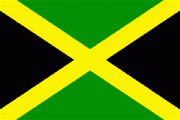KINGSTON, Nov. 27 (JIS): BY: TOMEICA GUNN
Alcohol continues to be the most widely used drug in Jamaica, with 40 per cent of the population or four out of every 10 people reporting that they currently use the substance.
This is according to the most recent Household Drug Survey conducted by the National Council on Drug Abuse (NCDA).
Seventy-five per cent of the population said that they had used alcohol at some point in their lifetime.
The survey, which was conducted from April to July this year among 4,623 persons residing in households across Jamaica, sought to ascertain the prevalence and patterns of substance use among the population ages 12 to 65.
Research Analyst at the NCDA, Uki Atkinson, tells JIS News that the survey also measured access and availability of drugs, perception of the harm of using various drugs, attitudes towards ganja decriminalisation, as well as the need for drug treatment due to problematic substance use.
The last survey was conducted in 2001.
Miss Atkinson notes that the data is “very important to our policymakers and for planning purposes, as it allows us to track what is happening in terms of the trends.”
From the information garnered, she says the NCDA has been able to develop profiles on who is using drugs among particular groups, looking at it by gender and socio-economic status.
She notes that drug use continues to be significantly higher among males. One in three men surveyed said that they had engaged in binge drinking. “This is having five or more drinks at one time or four or more drinks at one time for a woman,” Miss Atkinson explains.
In addition, one in six males reported that they had driven under the influence of alcohol or an illegal drug in the past year compared to one in 17 females.
Twenty-seven per cent of males reported to be using ganja compared to five per cent of females, while 28 per cent of the population said they had used ganja at some point in their lifetime.
For cigarettes, Miss Atkinson says that the prevalence among males is 11 per cent compared to five per cent for females. Seventeen per cent of the population reported that they currently use cigarettes, and 30 per cent said they had used the substance at some point.
As it relates to cocaine use, Miss Atkinson says the statistics have remained consistently below one per cent of the population for the past 30 years.
The survey also measured underage drinking. Fifteen per cent of children, ages12 to 17, reported to currently use alcohol, 3.3 per cent use ganja, and two per cent use tobacco.
Miss Atkinson says that it was found that the average age of first use of alcohol, tobacco or ganja was 15 to 16 years in males, with females starting at a later age.
She cites the need for the strengthening of prevention initiatives in order to increase the age of the first drug use, as well as increased enforcement of the laws governing underage drug use.
Pointing to trends since the last survey was conducted 15 years ago, Miss Atkinson reports that the only areas that showed a decline were alcohol use among adolescents and cigarette use among males, the latter of which saw a five per cent decrease.
Ganja and tobacco use among adolescents has remained the same.
The figures indicate a 13 per cent increase in alcohol use among the general population with use among females increasing by two per cent, and 13 per cent among males. Miss Atkinson says cigarette use among females has remained the same since 2001 at five per cent.
The survey also measured ganja use over the past year, with the passage of the amendments to the Dangerous Drugs Act (DDA), as well as the ban of smoking in public areas in 2013.
It was found that there was a six per cent increase in ganja use in the past year among the general population with a three per cent increase among females and a nine per cent increase among males.
Questioned as to whether the rise in ganja use was as a result of the changes to the legislation, Miss Atkinson says it was too soon to tell.
“The law was amended last year; we just did the survey, so what these figures can be used as is baseline data to see if there are increases after this,” she explains to JIS News.
She points out that there has been an increase in cannabis use globally.
The NCDA Research Analyst tells JIS News that based on the findings from the survey there is need for sustained public education on drugs, drug use, and drug laws.
She says that 70 per cent of the population reported that they have easy access to ganja. In addition, more than 70 per cent believe that there is moderate to high risk associated with smoking ganja or consuming it in food and drinks, and less than 15 per cent said that they were aware of changes to the DDA.
The 2015 legislation makes the possession of small quantities of ganja a non-arrestable offence, and instead makes it a ‘ticketable’ infraction that does not result in a criminal record.
It also permits the use of ganja for religious, medical, scientific, and therapeutic purposes, and provides for regulation through the granting of licences to permit the development of a lawful industry for medical ganja and industrial hemp.
“A third of the population reported that they did not know any of the changes recently made to the DDA, while half of the population reported being aware of only a few of the changes,” Miss Atkinson points out.
She notes, however, that nearly 90 per cent of the population believe that the use of ganja should be allowed for scientific, research or medical and therapeutic purposes.
Miss Atkinson further cites the need for targeted intervention for male substance users as well as continued surveillance to track trends, and regeneration of the Drug Information Network.
The network was established in 2003 to monitor the extent and nature of the drug problem; engage diverse communities; garner information to guide planning; and for programme implementation and review.
The NCDA Research Analyst is imploring persons in need of support to contact the NCDA, noting that there are a myriad of treatment and support programmes available.
The Household Drug Survey was conducted through funding and technical support from the Inter-American Drug Abuse Control Commission (CICAD) of the Organization of American States (OAS).


